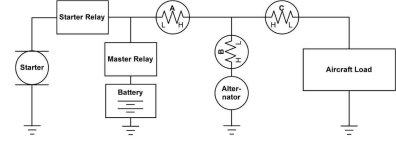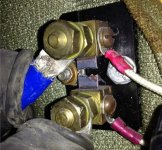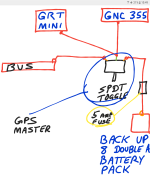I have a SkyTec starter. Their website says typical current requirements are 190A initial inrush and 65-90A continuous.
I'm thinking about using a Dynon 0-60A ammeter shunt for current measurement, putting it on the battery negative lead. The Dynon Skyview installation manual just says to not install the shunt on the starter cable, but it seems to me (a non-electrical expert) that anywhere in the battery circuit will experience the same current flow.
I've done a search on the Dynon forum without finding much about this.
Does anyone know if the Dynon shunt and the Dynon EMS220 system it connects to will tolerate these starter loads?
Thanks for your help.
I'm thinking about using a Dynon 0-60A ammeter shunt for current measurement, putting it on the battery negative lead. The Dynon Skyview installation manual just says to not install the shunt on the starter cable, but it seems to me (a non-electrical expert) that anywhere in the battery circuit will experience the same current flow.
I've done a search on the Dynon forum without finding much about this.
Does anyone know if the Dynon shunt and the Dynon EMS220 system it connects to will tolerate these starter loads?
Thanks for your help.







